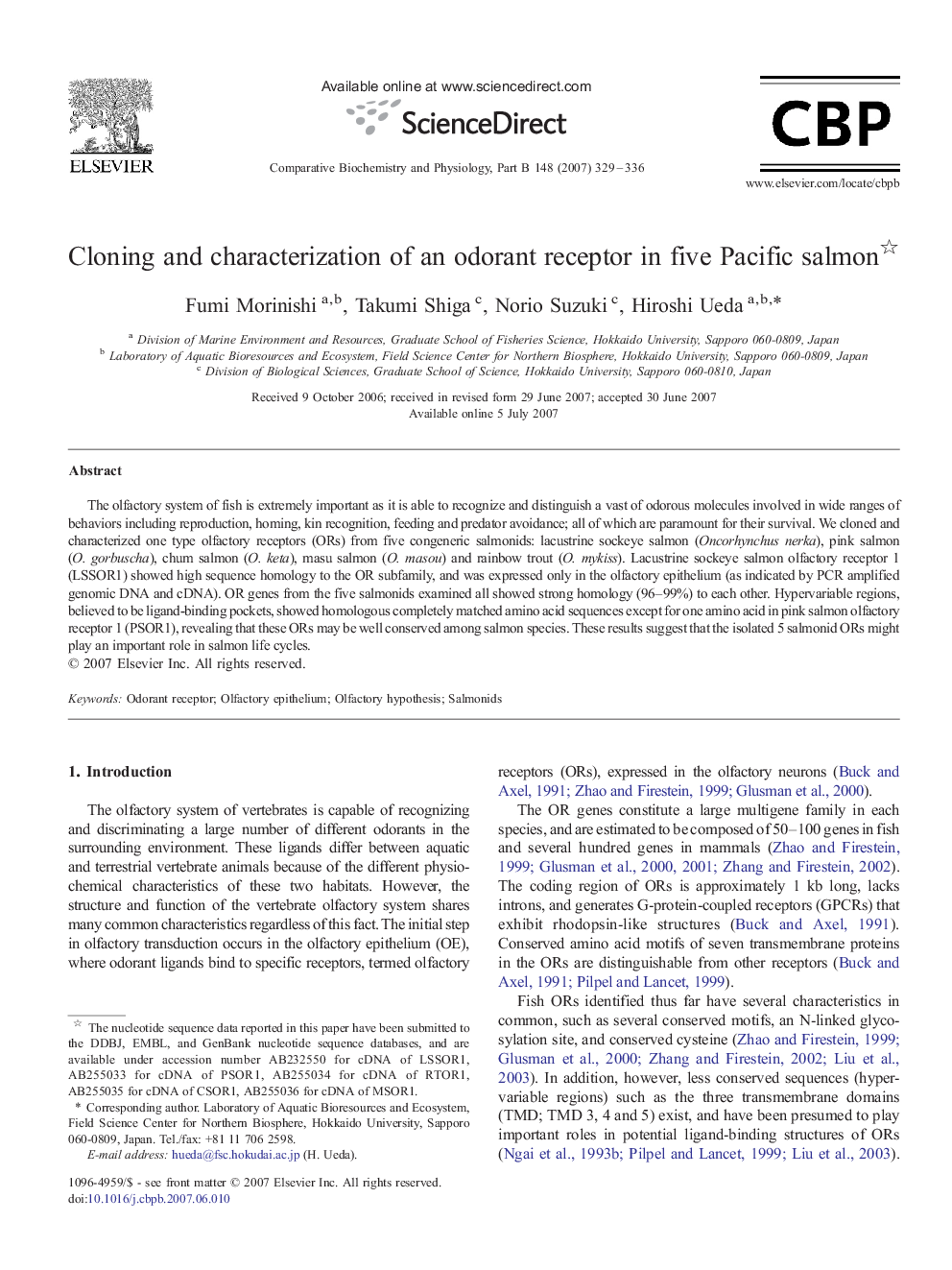| Article ID | Journal | Published Year | Pages | File Type |
|---|---|---|---|---|
| 1976558 | Comparative Biochemistry and Physiology Part B: Biochemistry and Molecular Biology | 2007 | 8 Pages |
Abstract
The olfactory system of fish is extremely important as it is able to recognize and distinguish a vast of odorous molecules involved in wide ranges of behaviors including reproduction, homing, kin recognition, feeding and predator avoidance; all of which are paramount for their survival. We cloned and characterized one type olfactory receptors (ORs) from five congeneric salmonids: lacustrine sockeye salmon (Oncorhynchus nerka), pink salmon (O. gorbuscha), chum salmon (O. keta), masu salmon (O. masou) and rainbow trout (O. mykiss). Lacustrine sockeye salmon olfactory receptor 1 (LSSOR1) showed high sequence homology to the OR subfamily, and was expressed only in the olfactory epithelium (as indicated by PCR amplified genomic DNA and cDNA). OR genes from the five salmonids examined all showed strong homology (96-99%) to each other. Hypervariable regions, believed to be ligand-binding pockets, showed homologous completely matched amino acid sequences except for one amino acid in pink salmon olfactory receptor 1 (PSOR1), revealing that these ORs may be well conserved among salmon species. These results suggest that the isolated 5 salmonid ORs might play an important role in salmon life cycles.
Related Topics
Life Sciences
Biochemistry, Genetics and Molecular Biology
Biochemistry
Authors
Fumi Morinishi, Takumi Shiga, Norio Suzuki, Hiroshi Ueda,
